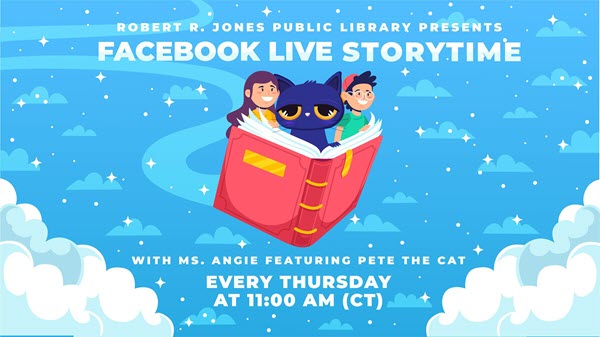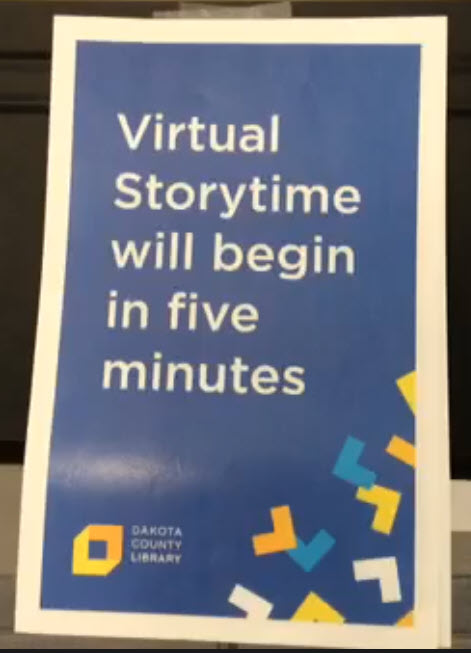Library Storytimes during COVID-19 – a Different Kind of Connection
In part one of a two-part series, Saroj Ghoting, early childhood literacy consultant, looks at ways to adjust storytimes for virtual engagement. Read part two, Connecting with Families.
One of the most cherished library programs for young children and their families is storytime. Going virtual during this time of physical distancing brought on by the pandemic offers us opportunities to view our connection with young children and their families in a new light. Our current situation is different from simply adding virtual storytimes to an array of services in more normal times, when people have the option to gather in groups in public places. Families do not have the option to come to the library or to gather in communities. While virtual interactions are not the same as meeting face-to-face, this is a time to explore what works well in an online environment, what we can capitalize on, and what we can learn for the future.
Rising to the occasion
You miss the children, and they miss you! It is heartening to see so many storytime providers in so many library systems bringing online storytimes to life in such a short period of time. Storytime regulars will see your virtual presence as a stabilizing influence in a time of uncertainty and unfamiliarity. Yes, you can post links to celebrity authors/illustrators sharing their books, but that is not the same as children being able to connect with you, the smiling face and warm personality of their local storytime. Publishers have made it easier for us to share their full titles digitally, which has given us more freedom in materials to choose from.
It’s now one-on-one time
It is a natural inclination to try to mimic a library storytime, as if the children and their parents or caregivers are sitting in a circle in front of you. But in this virtual setting, it is more like you are reading intimately with each individual child who is watching from home.
The virtual storytime allows you to imagine a one-on-one interaction between you and a child. This could change everything from how you hold the book, to the tempo you use and your tone of voice. Look into the camera as if making eye contact with one child. Keep the tempo slow enough for the child to absorb what they’re hearing and allow time for them to respond to questions or suggested actions. It also offers a wonderful chance to model how one-on-one book sharing looks for parents and caregivers who might be observing.
Supercharging still applies here
Supercharged Storytimes is an approach that applies intentional strategies to boost early literacy in young children attending your storytimes. These strategies of interactivity and intentionality can work in the virtual environment, as well as in person. As you think of this as a one-on-one reading, you can focus on connecting with an individual child and worry less about getting the attention of a whole group. Spend some time thinking about what early literacy skills you’d like to emphasize in your virtual storytime.
Some tips for supercharging your virtual storytimes:
- Point to pictures or words on the page from time to time to build awareness that print has meaning (print awareness).
- Repeat rhymes as often as you would for in-person storytimes so that children become comfortable joining in. Saying rhymes and pointing out rhyming words helps children hear the smaller sounds in words which helps children later sound out words when they learn to read (phonological awareness).
- Ask the child to predict what might happen next before you turn the page. Remember to leave several seconds for young children to think and respond. It is easy to be too quick about it, especially when there are no children physically in front of you. Predicting helps build comprehension (background knowledge).
- Use a factual book. Parents are looking for ways to help their children learn, and this format is a great opportunity to help them become familiar with non-fiction books while seeing their children’s curiosity piqued. You need not read the whole book. Sharing factual books and information builds children’s vocabulary and background knowledge which leads to better comprehension (vocabulary, background knowledge).
Some cautions:
- When doing a storytime activity with objects, think about what children are likely to have at home. For example, if you are doing a scarf song, you might demonstrate it with a washcloth or towel instead.
- Avoid activities that ask a child to touch their face since families are working to train children to not touch their faces.
In the midst of this pandemic, so many things are disrupted and different. Storytime providers have stepped up to the challenge of restoring some calm and comfort while sharing the joy found in sharing books and other language activities. You can continue to play your important role in developing early literacy through virtual storytimes and keeping the connections going with children and families in your communities.
Part two in this series explores ways you can connect with parents and caregivers to help them engage with their children around reading.


